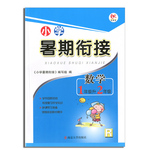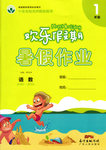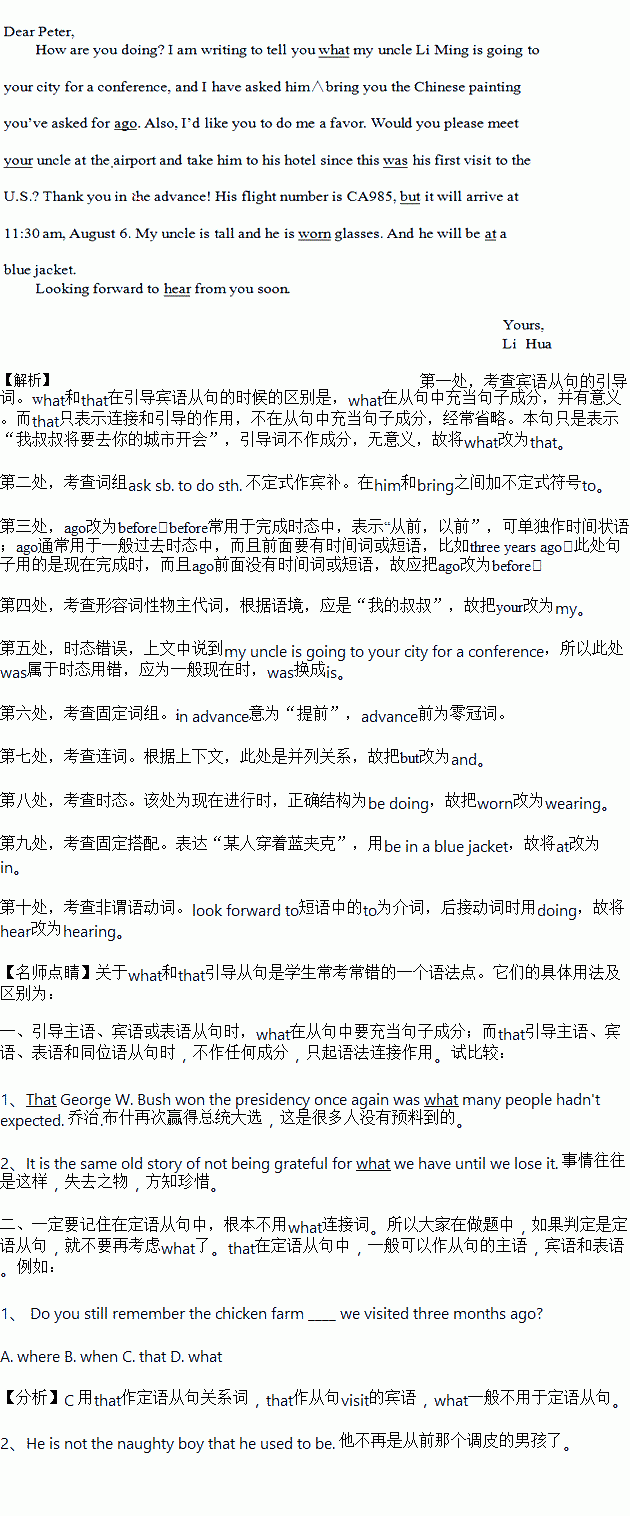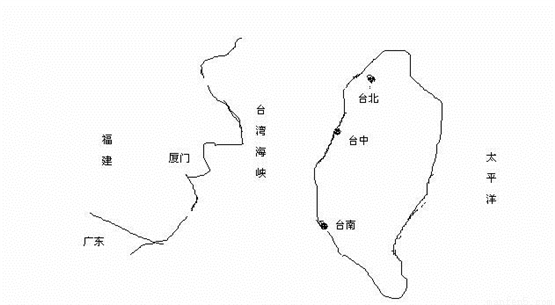题目内容
假定英语课上老师要求同桌之间交换修改作文,请你修改你同桌写的以下作文。文中共有10处语言错误,每句中最多有两处,每处错误仅涉及一个单词的增加、删除或修改。
增加:在缺词处加一个漏字符号(∧),并在其下面写出该加的词。
删除:把多余的词用斜线(\)划掉。
修改:在错的词下划一横线,并在该词下面写出修改后的词。
注意:1.每处错误及其修改均限一词。
2.只允许修改10处,多者(从第11处起)不计分。
Dear Peter,
How are you doing? I am writing to tell you what my uncle Li Ming is going to your city for a conference, and I have asked him bring you the Chinese painting you’ve asked for ago. Also, I’d like you to do me a favor. Would you please meet your uncle at the airport and take him to his hotel since this was his first visit to the U.S.? Thank you in the advance! His flight number is CA985, but it will arrive at 11:30 am, August 6. My uncle is tall and he is worn glasses. And he will be at a blue jacket.
Looking forward to hear from you soon.
Yours,
Li Hua
 学而优暑期衔接南京大学出版社系列答案
学而优暑期衔接南京大学出版社系列答案 Happy holiday欢乐假期暑假作业广东人民出版社系列答案
Happy holiday欢乐假期暑假作业广东人民出版社系列答案

